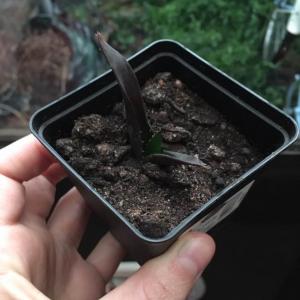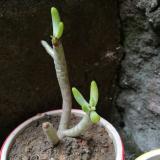求助
Suzy
2017年09月16日

发财树一直掉叶,才发的芽就开始蔫了,大点的叶子也有些变黄,高手帮帮忙吧,能救活不#1、发财树


0
0
sunnyzou:水大了…… 干到叶子往下垂了,再浇透水。增加光照和通风。光照明显不足。
玉米:不要等它们自己掉黄叶子,只要看到叶子发黄就剪掉,这样可以避免别的好叶子也发黄。∩_∩
(此外,叶子发黄还可能是叶子太多,营养供应不上,去掉一些叶子,多给发财树加一些营养物质。淘米水等。)
文章
Dummer. ゛☀
2017年09月15日

Slightly smaller than a housefly, adult apple maggots (Rhagoletis pomonella) are 1/5 inch long and have conspicuous black bands — resembling a W — running across their transparent wings. The larvae (1/4 inch long) are white, tapered maggots that tunnel throughout the flesh of fruit. They are often found in large numbers and can quickly reduce a beautiful apple to a brown, pulpy mess. External signs of maggot infestation appear as pinpricks made on the apple surface. These are often small, distorted or pitted areas.
Life Cycle
The apple maggot overwinters as pupae in the soil. Adult flies emerge in late spring and begin to lay eggs just under the apple skin. The eggs hatch, and the larvae begin to tunnel through the fruit. When mature, the maggot leaves through a small opening made in the side of the fruit and enters the soil. One or two generations per year.
Control
The majority of maggots leave the fruit several days after it has fallen from the tree. As a result, a certain level of control can be achieved by picking up and discarding the dropped apples.
Red Sphere Traps will greatly reduce damage and work well to capture and reduce the number of egg laying adults. Traps should be placed within the canopy just as trees are finished blooming. Hang spheres high in the brightest areas of the tree, 6-7 feet from the ground. Set out one trap for every 150 apples (2 traps per dwarf tree).
Beneficial nematodes are microscopic, worm-like parasites that actively hunt, penetrate and destroy the pupal stage of this pest. For best results, apply in the early spring or fall around the base of trees, out to the drip line. One application will continue working for 18 months.
Surround WP — made from kaolin clay — will suppress a broad range of insects and has shown over 90% control of apple pests. It also has a positive effect on fungal diseases like fire blight, sooty blotch and flyspeck.
Fast-acting botanical insecticides should be used as a last resort. Derived from plants which have insecticidal properties, these natural pesticides have fewer harmful side effects than synthetic chemicals and break down more quickly in the environment.

Life Cycle
The apple maggot overwinters as pupae in the soil. Adult flies emerge in late spring and begin to lay eggs just under the apple skin. The eggs hatch, and the larvae begin to tunnel through the fruit. When mature, the maggot leaves through a small opening made in the side of the fruit and enters the soil. One or two generations per year.

Control
The majority of maggots leave the fruit several days after it has fallen from the tree. As a result, a certain level of control can be achieved by picking up and discarding the dropped apples.
Red Sphere Traps will greatly reduce damage and work well to capture and reduce the number of egg laying adults. Traps should be placed within the canopy just as trees are finished blooming. Hang spheres high in the brightest areas of the tree, 6-7 feet from the ground. Set out one trap for every 150 apples (2 traps per dwarf tree).

Beneficial nematodes are microscopic, worm-like parasites that actively hunt, penetrate and destroy the pupal stage of this pest. For best results, apply in the early spring or fall around the base of trees, out to the drip line. One application will continue working for 18 months.
Surround WP — made from kaolin clay — will suppress a broad range of insects and has shown over 90% control of apple pests. It also has a positive effect on fungal diseases like fire blight, sooty blotch and flyspeck.

Fast-acting botanical insecticides should be used as a last resort. Derived from plants which have insecticidal properties, these natural pesticides have fewer harmful side effects than synthetic chemicals and break down more quickly in the environment.
0
0
文章
权问薇
2017年09月14日

#发财树 种子播种
通过播种播出来的发财树,发芽率其实挺高,而且种子种出来的发财树更皮实,养护起来更简单。
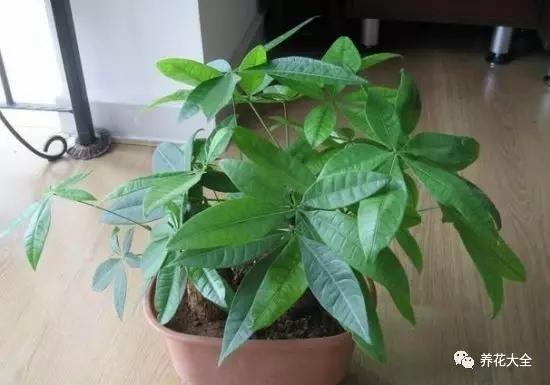
播种步骤
1.只要温度保证在20度以上,发财树四季都可以播种,南方没有暖气的花友要特别注意哦!

2.摘下发财树成熟的种荚,把种荚轻轻敲开,就可以看到里面一粒粒小种子。

3.把发财树的种子摊在阴凉通风的地方,晾一会,然后泡入多菌灵溶液中10分钟,杀菌消毒。

4.把发财树的种子种进土里,尖的一端朝下,种子表面覆盖土壤1-2厘米,种植的土壤可以用泥炭土,也可以用泥炭+珍珠岩。
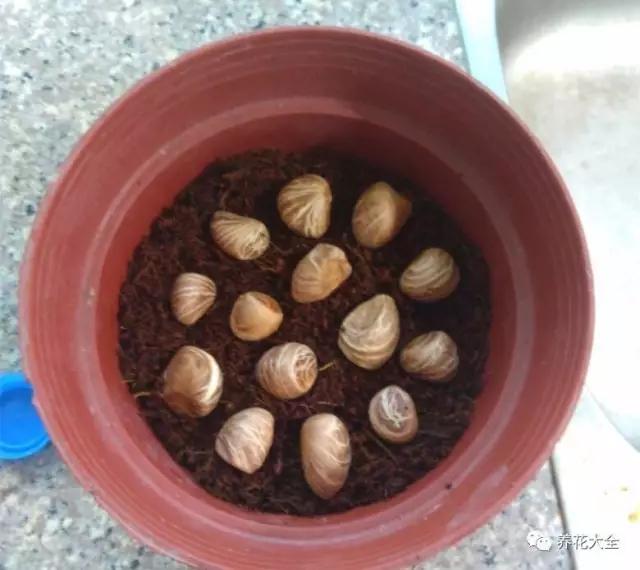
5.浇透水,放在散光通风的地方养护,期间保持不干不浇,10天左右,就能看到小苗萌发啦!

6.种子长出4-5片叶的时候移栽,每月施1次肥,每年换1次盆。长到一定高度就可以几株一起编辫子。

多肉
多肉一旦开花,我们会经常把它剪掉,其实哦,不剪掉也行,让它们异株授粉,结出种子,就能繁殖出很多多肉啦!不过种子非常非常细小,收集的时候要认真哦!

播种步骤
1.准备多肉种子、育苗盒、多菌灵、播种土壤。
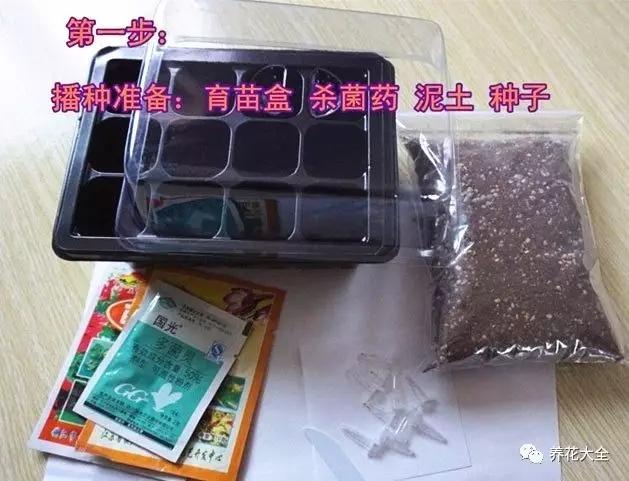
2.先撒一层陶粒在育苗盒底部,然后再把播种土壤混合均匀,再装进育苗盒。播种土壤可以按照泥炭土:稻壳炭:蛭石:赤玉土=1:1:1:1的比例配制。

3.把育苗盒底部的盒子,倒入多菌灵粉末,然后倒入清水,大概9分满。

4.把装满土壤的一格,放在装多菌灵溶液的一格上面,让水通过底部的孔浸湿土壤。

5.10分钟后,土壤完全浸透,把底部盒子里的多菌灵溶液倒掉。

6.找一张A4纸,对折,把多肉种子倒在白纸上,用牙签蘸水,一粒粒放在土层上,如果嫌麻烦也可以直接网上倒,但要均匀一些,并且在无风的条件下操作,小心种子被风吹走。
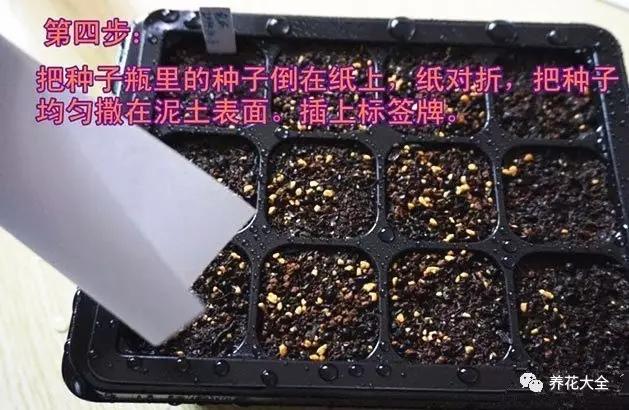
7.多肉种子细小,一般不需要覆土,种完后,盖上盖子,放在散光通风的地方,不要暴晒,表面土壤干了就喷水保湿。
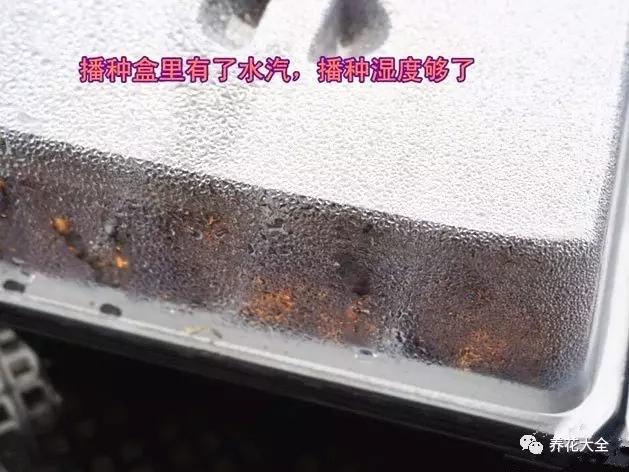
8.大概1-2周后,种子开始发芽,等到全部的种子都发芽了,就可以拿开盖子,渐渐让多肉晒太阳了。
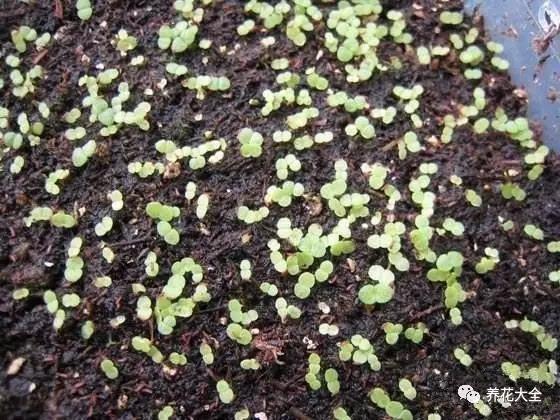
9.大概一个月后,多肉就开始长出萌萌的叶片啦!

文竹
文竹开花星星点点,非常好看,结的小果子也很可爱,而且这些小果子一棵就能种出一棵小文竹哦!

播种步骤
1.要想文竹能发芽,得选择那种熟透的额,黑黑的、捏起来硬硬的,像绿豆一样大小的。

2.把成熟的种子摘下来,清洗干净,放水里泡半个小时到一个小时,让表皮变软,小芽更容易发出来。

3.准备疏松肥沃的腐叶土或泥炭土,装进花盆,作为文竹的种植土。

4.把文竹种子均匀得撒在盆中,再在种子的上方覆盖2-3厘米左右的土层,浇透水,罩上一个塑料袋保湿。
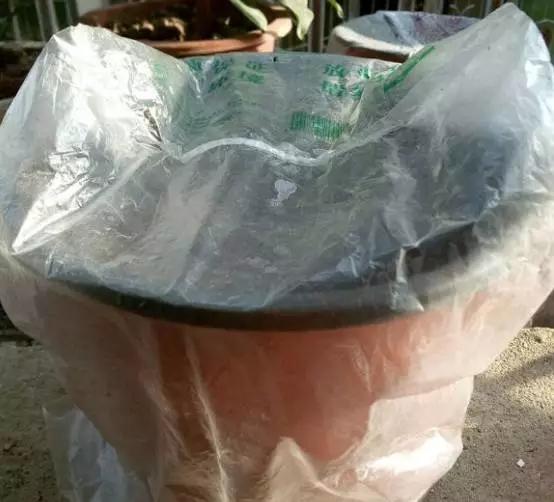
5.每天中午打开塑料袋通风3个小时,每天喷水,保持土面湿润,大概20-30天,种子就会发芽啦!发芽之后,去掉塑料袋,放在散光通风的地方养护。

6.保持不干不浇的浇水频率,和散光通风的环境,小文竹就会一点一点长大。

7.等到小小的文竹,出现散开状叶片的时候,我们就可以把几棵几棵小文竹,移栽到其他花盆里了。

8.这样,你就很快成为文竹大户了!而且自己种的文竹皮实又好养,很容易爬满墙哦!

通过播种播出来的发财树,发芽率其实挺高,而且种子种出来的发财树更皮实,养护起来更简单。

播种步骤
1.只要温度保证在20度以上,发财树四季都可以播种,南方没有暖气的花友要特别注意哦!

2.摘下发财树成熟的种荚,把种荚轻轻敲开,就可以看到里面一粒粒小种子。

3.把发财树的种子摊在阴凉通风的地方,晾一会,然后泡入多菌灵溶液中10分钟,杀菌消毒。

4.把发财树的种子种进土里,尖的一端朝下,种子表面覆盖土壤1-2厘米,种植的土壤可以用泥炭土,也可以用泥炭+珍珠岩。

5.浇透水,放在散光通风的地方养护,期间保持不干不浇,10天左右,就能看到小苗萌发啦!

6.种子长出4-5片叶的时候移栽,每月施1次肥,每年换1次盆。长到一定高度就可以几株一起编辫子。

多肉
多肉一旦开花,我们会经常把它剪掉,其实哦,不剪掉也行,让它们异株授粉,结出种子,就能繁殖出很多多肉啦!不过种子非常非常细小,收集的时候要认真哦!

播种步骤
1.准备多肉种子、育苗盒、多菌灵、播种土壤。

2.先撒一层陶粒在育苗盒底部,然后再把播种土壤混合均匀,再装进育苗盒。播种土壤可以按照泥炭土:稻壳炭:蛭石:赤玉土=1:1:1:1的比例配制。

3.把育苗盒底部的盒子,倒入多菌灵粉末,然后倒入清水,大概9分满。

4.把装满土壤的一格,放在装多菌灵溶液的一格上面,让水通过底部的孔浸湿土壤。

5.10分钟后,土壤完全浸透,把底部盒子里的多菌灵溶液倒掉。

6.找一张A4纸,对折,把多肉种子倒在白纸上,用牙签蘸水,一粒粒放在土层上,如果嫌麻烦也可以直接网上倒,但要均匀一些,并且在无风的条件下操作,小心种子被风吹走。

7.多肉种子细小,一般不需要覆土,种完后,盖上盖子,放在散光通风的地方,不要暴晒,表面土壤干了就喷水保湿。

8.大概1-2周后,种子开始发芽,等到全部的种子都发芽了,就可以拿开盖子,渐渐让多肉晒太阳了。

9.大概一个月后,多肉就开始长出萌萌的叶片啦!

文竹
文竹开花星星点点,非常好看,结的小果子也很可爱,而且这些小果子一棵就能种出一棵小文竹哦!

播种步骤
1.要想文竹能发芽,得选择那种熟透的额,黑黑的、捏起来硬硬的,像绿豆一样大小的。

2.把成熟的种子摘下来,清洗干净,放水里泡半个小时到一个小时,让表皮变软,小芽更容易发出来。

3.准备疏松肥沃的腐叶土或泥炭土,装进花盆,作为文竹的种植土。

4.把文竹种子均匀得撒在盆中,再在种子的上方覆盖2-3厘米左右的土层,浇透水,罩上一个塑料袋保湿。

5.每天中午打开塑料袋通风3个小时,每天喷水,保持土面湿润,大概20-30天,种子就会发芽啦!发芽之后,去掉塑料袋,放在散光通风的地方养护。

6.保持不干不浇的浇水频率,和散光通风的环境,小文竹就会一点一点长大。

7.等到小小的文竹,出现散开状叶片的时候,我们就可以把几棵几棵小文竹,移栽到其他花盆里了。

8.这样,你就很快成为文竹大户了!而且自己种的文竹皮实又好养,很容易爬满墙哦!

0
2
文章
权问薇
2017年09月14日


#大丽花 怎么施肥
1、施肥的时候不能单单重视氮的多少,如果忽略这个问题,大丽花可能只有叶子而花朵开不出来。
2、追施肥料要注意。高温季节(夏季三十摄氏度以上时)要停止追肥,秋天的时候气温下降方可正常追肥。

3、大丽花对肥料的吸收能力很好,但正因为这样,追肥才不能过度,它的茎叶才能长的刚好。虽然要有供给充分的肥料,不然大丽花开出来就会更小,颜色并不丰满,没那么好看了。其次根据它的生长情况决定追肥与否,最好是一些浇薄的肥料。
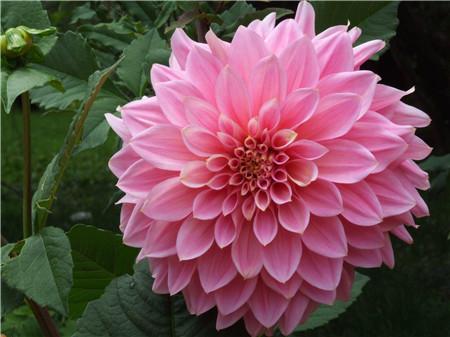
4、小苗最初一般半月左右加施一会浓度较低的液肥。出现花苞后每7-10天一次。花蕾出现时就应该停止施肥。根据植株的长势来决定肥量的多少。凡叶片色不深,就该施肥了;但是叶片发黄的话就是是非过多导致的,此时应该暂停施肥。
5、出现花蕾以后每隔月三次液肥,花苞微微绽开时方可停止。10cm-15cm的根茎要在霜冻之前流出来,剪去枝叶,掘起块根,晾一到两天,就能放在屋里储存啦。屋内温度为五摄氏度右。
注意事项
就算再喜肥的植物也不能施肥过多,越是对肥料的吸收好月不能掉以轻心,肥量越要严苛控制,这个花友们日后还要在实践中慢慢学习哦。
0
3
文章
Dummer. ゛☀
2017年09月14日

Common in home gardens across North America, wireworms (up to 1-1/2 inch long) are tough slender worms with shiny skin and three pairs of legs just behind their head. They are yellow to brownish-red in color and feed entirely underground, attacking germinating seeds, roots, bulbs and tubers. Damaged plants soon wilt and die. If infestations are heavy, thin and patchy crops may appear in the garden and reseeding will most likely be necessary.
Note: Wireworms are the larval stage of click beetles. Approximately 1/2 inch long, these brown to black colored, bullet-shaped beetles are notable for their ability to click and right themselves when placed on their backs.
Life Cycle
Wireworm larvae and adults overwinter in the soil. In early spring female beetles emerge from the soil, mate and lay eggs underground. Hatching takes place in 2-4 weeks, and the young larvae begin working their way through the soil in search of food. Larvae feed underground for 2-6 years with most of their damage occurring in early spring when soil temperatures are cool. Pupation occurs in late summer and adult beetles emerge in the spring. One generation per year, the life-cycle requiring 1-6 years to complete.
Wireworm Control
Thorough cultivation of the top 6- to 8-inches of soil makes conditions unfavorable to the egg laying adults and exposes all stages of the pest to weather and natural enemies.
Potatoes make great wireworm traps. Cut a potato in half and run a stick through the middle. Bury the spud about one inch deep so that the stick stands vertically as a handle. Pull the traps out after a day or two and discard wireworms.
Crop rotation is especially important to the organic vegetable grower because it can help reduce many pest problems that lead to the use of pesticides.
Apply beneficial nematodes when planting to attack and destroy developing pests in the soil.
EcoSMART Organic Insect Killer can be used around home foundations, lawns and landscapes (ornamental and flower gardens). Apply 2-5 lbs over 1000 sq ft every 2-4 weeks or as needed.
Birds can consume large amounts of larvae. Encourage them by hanging houses and feeders near your garden.
Soil drenches containing the botanical insecticide pyrethrin are somewhat effective, but should only be used as a last resort.

Note: Wireworms are the larval stage of click beetles. Approximately 1/2 inch long, these brown to black colored, bullet-shaped beetles are notable for their ability to click and right themselves when placed on their backs.
Life Cycle
Wireworm larvae and adults overwinter in the soil. In early spring female beetles emerge from the soil, mate and lay eggs underground. Hatching takes place in 2-4 weeks, and the young larvae begin working their way through the soil in search of food. Larvae feed underground for 2-6 years with most of their damage occurring in early spring when soil temperatures are cool. Pupation occurs in late summer and adult beetles emerge in the spring. One generation per year, the life-cycle requiring 1-6 years to complete.

Wireworm Control
Thorough cultivation of the top 6- to 8-inches of soil makes conditions unfavorable to the egg laying adults and exposes all stages of the pest to weather and natural enemies.
Potatoes make great wireworm traps. Cut a potato in half and run a stick through the middle. Bury the spud about one inch deep so that the stick stands vertically as a handle. Pull the traps out after a day or two and discard wireworms.
Crop rotation is especially important to the organic vegetable grower because it can help reduce many pest problems that lead to the use of pesticides.
Apply beneficial nematodes when planting to attack and destroy developing pests in the soil.

EcoSMART Organic Insect Killer can be used around home foundations, lawns and landscapes (ornamental and flower gardens). Apply 2-5 lbs over 1000 sq ft every 2-4 weeks or as needed.
Birds can consume large amounts of larvae. Encourage them by hanging houses and feeders near your garden.
Soil drenches containing the botanical insecticide pyrethrin are somewhat effective, but should only be used as a last resort.
0
0
文章
Dummer. ゛☀
2017年09月14日

Common in and around the home, ants range in size from about 1/32 to 3/4 inch long. They have three body parts (head, thorax and abdomen) and can be anywhere from a yellowish-red in color to black. Most ants are wingless, but winged forms exist during “swarming” or colony reproduction.
As a group, ants are important natural predators of many insect pests including flea and fly larvae, caterpillars and termites. However, there are times when it may be necessary to control ants especially when they enter our homes in search of food. Some ant species become problems in lawns and gardens when they build large unsightly mounds or protect aphids, mealybugs, scales and other insect pests from their natural enemies. Ants can also damage plants by tunneling around the roots causing them to dry out.
Tip: Look closely to determine if what you see is an ant or a termite. Ants have narrow waists and bent antennae. Termites have thick waists and straight antennae.
Life Cycle
All ants are social insects and live in colonies with three distinct types of adults called castes. Queens are larger than other ants and are responsible for egg laying. Some species have only one queen per colony whereas others have many. Males are responsible for mating with the queens; they do not participate in any other activities. Workers are sterile wingless females. They make up the bulk of the colony and are responsible for building and defending the nest, caring for the young and foraging for food.
New ant colonies are established by a single fertilized queen that lays hundreds of eggs. After about 30 days the eggs hatch into legless larvae that do not resemble adults. The queen cares for the “maggot-like” larvae until they pupate approximately 1-2 months later. Within three weeks the pupae transform into adult “worker” ants, which begin collecting food for themselves, the queen and for future generations of larvae. Eggs are laid continuously throughout the spring, summer and fall. Colonies overwinter in the soil, woody areas or in garden trash.
Note: Ants have pincer-like jaws and can bite although most do not. A few species are very aggressive and will inflict a painful sting. Here’s how to get rid of ants without harming your family, pets or the environment.
Control
Like all pests, ants require food and water to survive; by eliminating these basic necessities you can greatly reduce their numbers.
Store food and organic wastes in sealed containers, clean up all kitchen surfaces and empty trash daily.
Caulk cracks and crevices around foundations and apply Don’t Bug Me Spray to door and window jams to prevent entry from outside.
Where pipes and electrical wires enter the house spread Tanglefoot Pest Barrier to keep crawling pests outside.
Diatomaceous earth contains no toxic poisons and works quickly on contact. Dust lightly and evenly around areas where pest insects are found.
Apply Organic Insect Killer Granules around foundations, lawns and landscaped areas to eliminate or repel all kinds of crawling insects.
Dust Boric Acid lightly into cracks, crevices, wall voids and other insect hiding places. This fine powder clings to the legs, antennae and bodies of crawling insects and acts as a stomach poison when consumed during grooming.
Spray Orange Guard, made from citrus peel extract, to kill on contact. Approved for organic use, Orange Guard is a broad spectrum insect killer that’s safe to use indoors and out. Repeat applications may be necessary.
Safer Ant & Roach Killer is the first effective, truly organic aerosol that kills crawling insects in seconds. Best of all, it has a fresh citrus scent, so there is no chemical odor!
Tip: The best way to keep ants from coming indoors is to locate the mound and destroy the colony. While this is not always an easy task sometimes a chunk of jelly placed where ants are found will help. As the workers are attracted to the food source pay close attention as they carry it back to their nest. Set pre-filled outdoor bait stations where you find ant mounds or their trails. Botanical pesticides applied directly to the soil will also destroy existing mounds.
As a group, ants are important natural predators of many insect pests including flea and fly larvae, caterpillars and termites. However, there are times when it may be necessary to control ants especially when they enter our homes in search of food. Some ant species become problems in lawns and gardens when they build large unsightly mounds or protect aphids, mealybugs, scales and other insect pests from their natural enemies. Ants can also damage plants by tunneling around the roots causing them to dry out.

Tip: Look closely to determine if what you see is an ant or a termite. Ants have narrow waists and bent antennae. Termites have thick waists and straight antennae.
Life Cycle
All ants are social insects and live in colonies with three distinct types of adults called castes. Queens are larger than other ants and are responsible for egg laying. Some species have only one queen per colony whereas others have many. Males are responsible for mating with the queens; they do not participate in any other activities. Workers are sterile wingless females. They make up the bulk of the colony and are responsible for building and defending the nest, caring for the young and foraging for food.

New ant colonies are established by a single fertilized queen that lays hundreds of eggs. After about 30 days the eggs hatch into legless larvae that do not resemble adults. The queen cares for the “maggot-like” larvae until they pupate approximately 1-2 months later. Within three weeks the pupae transform into adult “worker” ants, which begin collecting food for themselves, the queen and for future generations of larvae. Eggs are laid continuously throughout the spring, summer and fall. Colonies overwinter in the soil, woody areas or in garden trash.
Note: Ants have pincer-like jaws and can bite although most do not. A few species are very aggressive and will inflict a painful sting. Here’s how to get rid of ants without harming your family, pets or the environment.

Control
Like all pests, ants require food and water to survive; by eliminating these basic necessities you can greatly reduce their numbers.
Store food and organic wastes in sealed containers, clean up all kitchen surfaces and empty trash daily.
Caulk cracks and crevices around foundations and apply Don’t Bug Me Spray to door and window jams to prevent entry from outside.
Where pipes and electrical wires enter the house spread Tanglefoot Pest Barrier to keep crawling pests outside.
Diatomaceous earth contains no toxic poisons and works quickly on contact. Dust lightly and evenly around areas where pest insects are found.
Apply Organic Insect Killer Granules around foundations, lawns and landscaped areas to eliminate or repel all kinds of crawling insects.
Dust Boric Acid lightly into cracks, crevices, wall voids and other insect hiding places. This fine powder clings to the legs, antennae and bodies of crawling insects and acts as a stomach poison when consumed during grooming.

Spray Orange Guard, made from citrus peel extract, to kill on contact. Approved for organic use, Orange Guard is a broad spectrum insect killer that’s safe to use indoors and out. Repeat applications may be necessary.
Safer Ant & Roach Killer is the first effective, truly organic aerosol that kills crawling insects in seconds. Best of all, it has a fresh citrus scent, so there is no chemical odor!

Tip: The best way to keep ants from coming indoors is to locate the mound and destroy the colony. While this is not always an easy task sometimes a chunk of jelly placed where ants are found will help. As the workers are attracted to the food source pay close attention as they carry it back to their nest. Set pre-filled outdoor bait stations where you find ant mounds or their trails. Botanical pesticides applied directly to the soil will also destroy existing mounds.
0
0
文章
权问薇
2017年09月13日


#蟹爪兰 的扦插
秋季气温降低,正是蟹爪兰扦插的好时机。
扦插步骤:
1、从蟹爪兰母株上切下健壮的蟹爪兰枝条,最好是当年生的,这样扦插成活率会高一些。将剪下来的叶片放在多菌灵中浸泡20分钟左右,然后晾干。

2、蟹爪兰扦插需要的土壤,一定要选择疏松透气的营养土,比如珍珠岩、蛭石或是松针土等。
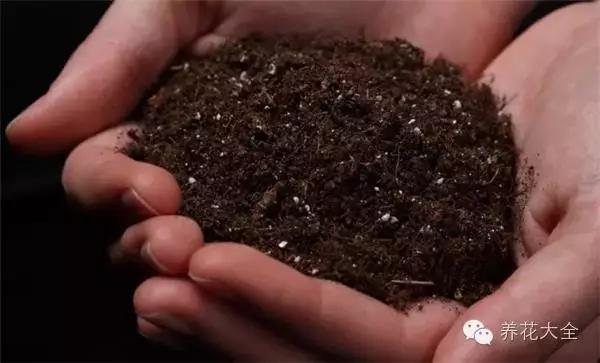
3、在晾干的蟹爪兰下端抹上点生根粉,能够加快蟹爪兰生根的速度。

4、将蟹爪兰插入准备好的土壤中,放在阴凉通风的地方,大概3-4天的时间,朝着土壤上喷点水。

5、大概1周左右的时间,扦插的蟹爪兰就可以生根了。

6、生根之后的蟹爪兰,直接上盆即可,然后放在阴凉通风的地方缓苗大概1-2周的时间,就可以进行正常养护了。
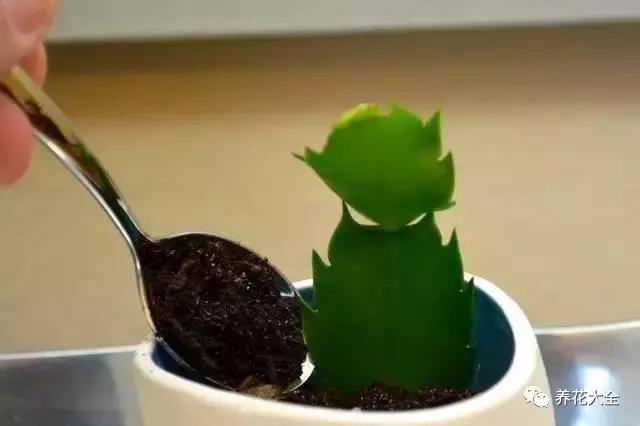
蟹爪兰的水插
如果有花友觉得扦插生根太麻烦,也可以直接采用水插的方式繁殖。
水插步骤:
1、从蟹爪兰母株上将需要扦插的茎切下来,稍微晾干伤口,然后将茎插入水中,下段大概3-5cm要在水中。

2、将蟹爪兰固定在水培瓶中,然后放在散射光充足的地方等待即可。

3、在根系还没长出来之前,大概2-3天换1次水,如果是自来水,最好晾24个小时候再用。大概1周左右就生根了。生根可以可以转土培,也可以一直水培。
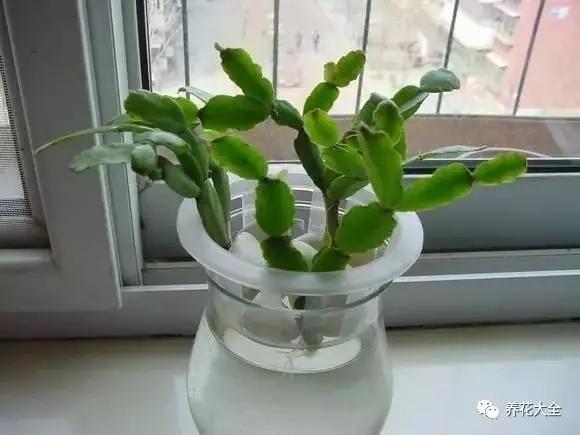
蟹爪兰的嫁接
蟹爪兰嫁接最适合的温度在17℃-25℃之间,因此趁着秋高气爽的时候嫁接,正是个好时候!
嫁接步骤:
1、砧木的选择。当做嫁接砧木的仙人掌,一定要选择耐寒的品种,最好选择那种冬季外表不会萎蔫的品种,而且叶片一定要保证肥厚,这样营养才足够生长。

2、接穗的选择。接穗要选择相对老一点、健壮肥厚的叶片,然后将下端削成鸭嘴状。

3、准备锋利的小刀、多菌灵溶液和药棉。用多菌灵溶液给蟹爪兰叶片、仙人掌叶片和小刀全都消毒,不然嫁接的时候容易黑腐。

4、在距离仙人掌顶端大概1cm左右的地方横切一刀,从而可以露出里面的切面。

5、用小刀在仙人掌的切面上再横切一刀,长度大概为蟹爪兰插穗的2/3即可。

6、给需要嫁接的蟹爪兰去掉表皮,大概去掉0.8-1cm即可,两面的皮都要去掉。去表皮的时候,千万别削太长了,不然到时候伤口露在外面,就得腐烂了。

7、将修剪好的蟹爪兰插到仙人掌划开的口子中,可以用牙签或夹子固定住,然后放在阴凉通风的地方大概2周左右。

8、之后准备好扦插需要的土壤,将嫁接好的仙人掌插入土壤中,浇半截水,在阴凉通风的地方养护半个月,再转移到光照下即可。

9、只要细心养护,嫁接的蟹爪兰很快就能开出漂亮的花朵了。

蟹爪兰的光照
蟹爪兰属于短日照植物,秋季大概每天给蟹爪兰8个小时的光照,剩下的时间将它放在黑暗不见光的地方,能够让蟹爪兰尽快分化花芽,从而提前开花,也就是俗称的“关小黑屋”。

蟹爪兰的浇水
蟹爪兰不能浇太多水,否则容易得根腐病。春秋大概3-5天浇1次即可,夏季休眠期,大概10-15天浇1次即可,注意一定要等到盆土表面完全干燥了之后再浇。

蟹爪兰的施肥
蟹爪兰喜肥,但是夏季高温期要停止施肥。秋季开始到没开花之前,大概每周施1次腐熟的液肥或是复合肥,孕蕾期要多施0.2%的磷酸二氢钾溶液,促进花芽分化,从而多开花。施肥的时候,要用细嘴喷壶沿着盆边慢慢施,不要沾到叶片上,否则会导致灼伤叶片。

蟹爪兰的修剪
1、花后修剪
蟹爪兰在开花之后,要及时将残花剪掉,大概在花下3-4片茎节的地方开始剪短,这样能减少不必要的养分消耗,从而让蟹爪兰开下一茬花。

2、秋季修剪
经过一个夏天的休眠期之后,蟹爪兰的植株开始变得乱七八糟,秋季正好修剪一下,不仅可以保证好看,还可以避免不必要的养分消耗,让蟹爪兰有更多营养去准备开花。
修剪前:

修剪后:
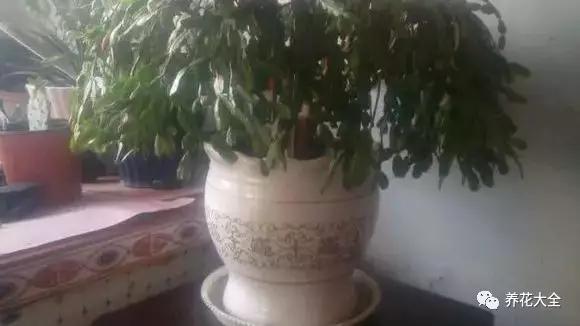
蟹爪兰叶子发软怎么办
花花在后台接受到的关于蟹爪兰最多的问题,就是叶子发软了。那么蟹爪兰的叶子为什么发软呢,花花觉得是烂根造成的!

解决方法:
1、如果烂根情况不是太严重的话,那就少浇一点水,适当增加光照后,让蟹爪兰慢慢适应回来。
2、如果烂根情况非常严重,那就只能换盆了。
(1)将蟹爪兰从原来的花盆中取出来,然后将根系上的土清理干净。

(2)找一把消过毒的剪刀,将蟹爪兰根系上的那些老根、弱根等全都修剪掉,之后放在多菌灵溶液中浸泡20分钟左右,然后拿出来放在阴凉通风的地方晾干。

(3)准备疏松透气的营养土,将晾干的蟹爪兰重新上盆,然后浇1次透水,之后放在阴凉通风的地方缓和1周左右的时间,再转移到阳光下即可。
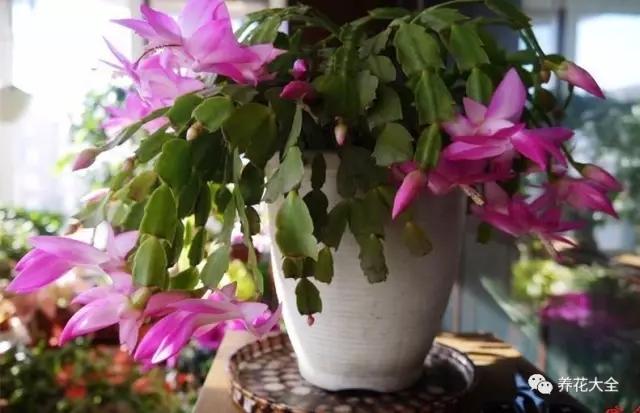
2
2
文章
权问薇
2017年09月13日


幼树
在幼苗种植1个月后成为幼树时,要观察其是否是真正成活状态,若发现有不成话的幼树,要及时除去,补种新的幼苗。它的施肥要在其成活后,但施肥量要控制好,不可过量,以免营养过盛,导致其死亡。要以多施肥,少施量的方法来进行。施肥周期约1个月一次即可。遇到干旱时节,要适量浇水来保湿。

结果
在#羊奶果 的花期要特别注意旱涝情况,及时浇水与排水,这时是提高果子产量的最佳时机。在羊奶果采摘完果实后,必须翻土施肥,有利于次年的健康与生长。

除草
可随时进行除草,而且要注意避免其土壤表面成龟裂状。也可在树下种植些花生、黄豆等植物,这样可以有效的防治杂草的生长,同时还降低了生长期的成本。
羊奶果属于亚洲热带植物,在我国的云南、广西等多地均有种植。其花期在10月至11月,果期在转年的3月至4月。它的果实也是富含多种营养成分。果实也被加工成多种食品供人们享用。羊奶果也是一种常见的中药。同样对生活中一些病症有很好的缓解与治疗的作用。
0
0
文章
权问薇
2017年09月13日

#杜鹃
1、选取半木质化的顶端枝条,剪下5~10厘米的长度,去掉枝条下面的叶子,只保留顶端的。
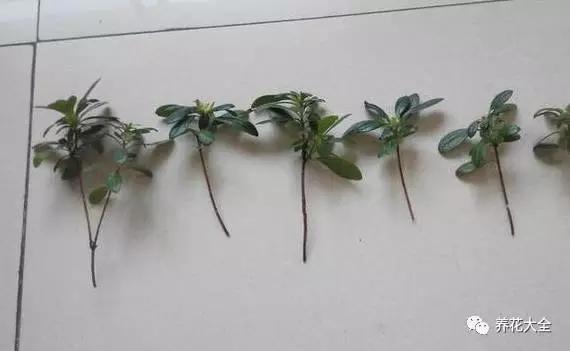
2、把处理好的杜鹃花枝条扦插到泡沫板中,枝条底部露出泡沫板三厘米左右。

3、把泡沫板放到一个大水缸中,先进行水培诱根。

4、等上半个月~1个月的时间,杜鹃就会长出根系,等根系长的健壮一些,差不多就可以进行上盆了。

5、上盆的时候,先把水培生根的杜鹃花捞出来,放在阴凉的地方晾个10分钟左右,再上盆,然后放到散射光处缓苗一段时间后再正常养护。

茶花
1、选择一年生的半木质化的枝条,用剪刀剪下10cm左右,顶端留3片叶子。

2、准备好干净的河沙,用河沙扦插生根会快。

3、把扦插用的枝条,伤口处放在多菌灵里泡一下,杀菌消毒,之后再在伤口上抹点儿生根粉,能够促进生根。

4、把枝条的1/3插进沙子中,浇透水,放在阴凉通风的地方,比如北阳台。

3、每天早晚用喷壶喷一次,一个月左右能够生根。如果空气湿度太低,可以套上个塑料袋哦~
但是塑料袋记得每天松开透透气。


月季
1.准备好刀片,剪刀,塑料瓶、透明胶带、蛭石。
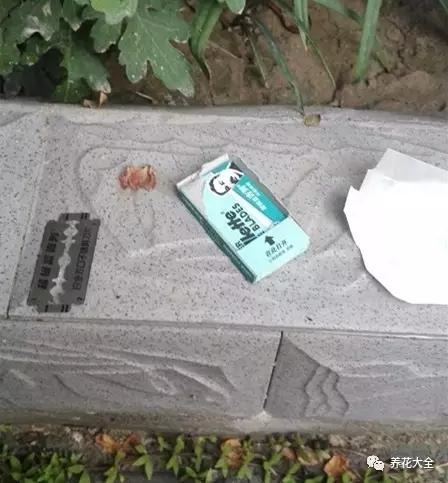
2、把塑料瓶瓶底剪掉,再竖着剪开。

3、选取生长健壮的月季枝条,在离地10到15厘米的距离上,用刀片环剥,环剥的长度大约1cm即可。就像是下图那样。

4.把剪好的塑料瓶瓶口朝下,掰开套在已经剥皮了的月季枝条上,然后用透明胶带把塑料瓶子粘好。

5.用蛭石把塑料瓶填满,浇透水。如果没有蛭石,也可以用珍珠岩之类的代替。
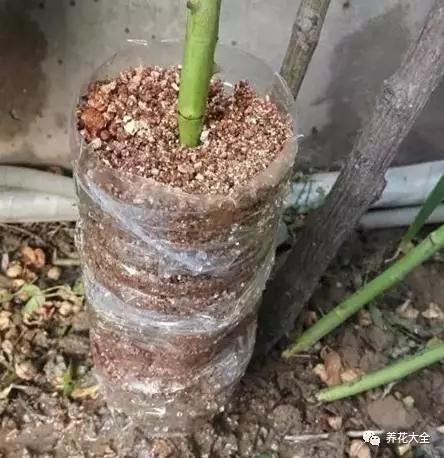
6.用塑料袋把封口封住,避免水分蒸发太快。

7.大约一个多月,就能长根,等根系长的健壮了一些,就可以去掉塑料瓶,然后移栽到新的花盆里了。在阴凉的地方缓根2~3天,就可以正常养护了。

茉莉
1、选择木质化的枝条,截取10cm。留顶端2片叶子,其余掐掉,以减少蒸发,就是留下的那两片叶子,也得剪掉一半。

2、将伤口处消毒之后,在生根粉溶液里面浸泡20分钟左右,阴干后插进细沙里。放在通风的墙角处,接受散射光即可。

3、每天喷洒水雾至少2次,保持湿度。大约1个月就能生根了。等根系长的健壮一些,再进行上盆即可。

栀子
1、截取2年生的枝条10cm。把下面的叶子摘掉,只留上面几片就行。

2、找个塑料瓶,倒上纯净水,把插条放进去。

3、瓶面覆盖保鲜膜,看见水没了就添点。当看见枝条表面长出白色的小凸起,就是快要长出根来了。出根后就能上盆了。

1、选取半木质化的顶端枝条,剪下5~10厘米的长度,去掉枝条下面的叶子,只保留顶端的。

2、把处理好的杜鹃花枝条扦插到泡沫板中,枝条底部露出泡沫板三厘米左右。

3、把泡沫板放到一个大水缸中,先进行水培诱根。

4、等上半个月~1个月的时间,杜鹃就会长出根系,等根系长的健壮一些,差不多就可以进行上盆了。

5、上盆的时候,先把水培生根的杜鹃花捞出来,放在阴凉的地方晾个10分钟左右,再上盆,然后放到散射光处缓苗一段时间后再正常养护。

茶花
1、选择一年生的半木质化的枝条,用剪刀剪下10cm左右,顶端留3片叶子。

2、准备好干净的河沙,用河沙扦插生根会快。

3、把扦插用的枝条,伤口处放在多菌灵里泡一下,杀菌消毒,之后再在伤口上抹点儿生根粉,能够促进生根。

4、把枝条的1/3插进沙子中,浇透水,放在阴凉通风的地方,比如北阳台。

3、每天早晚用喷壶喷一次,一个月左右能够生根。如果空气湿度太低,可以套上个塑料袋哦~
但是塑料袋记得每天松开透透气。


月季
1.准备好刀片,剪刀,塑料瓶、透明胶带、蛭石。

2、把塑料瓶瓶底剪掉,再竖着剪开。

3、选取生长健壮的月季枝条,在离地10到15厘米的距离上,用刀片环剥,环剥的长度大约1cm即可。就像是下图那样。

4.把剪好的塑料瓶瓶口朝下,掰开套在已经剥皮了的月季枝条上,然后用透明胶带把塑料瓶子粘好。

5.用蛭石把塑料瓶填满,浇透水。如果没有蛭石,也可以用珍珠岩之类的代替。

6.用塑料袋把封口封住,避免水分蒸发太快。

7.大约一个多月,就能长根,等根系长的健壮了一些,就可以去掉塑料瓶,然后移栽到新的花盆里了。在阴凉的地方缓根2~3天,就可以正常养护了。

茉莉
1、选择木质化的枝条,截取10cm。留顶端2片叶子,其余掐掉,以减少蒸发,就是留下的那两片叶子,也得剪掉一半。

2、将伤口处消毒之后,在生根粉溶液里面浸泡20分钟左右,阴干后插进细沙里。放在通风的墙角处,接受散射光即可。

3、每天喷洒水雾至少2次,保持湿度。大约1个月就能生根了。等根系长的健壮一些,再进行上盆即可。

栀子
1、截取2年生的枝条10cm。把下面的叶子摘掉,只留上面几片就行。

2、找个塑料瓶,倒上纯净水,把插条放进去。

3、瓶面覆盖保鲜膜,看见水没了就添点。当看见枝条表面长出白色的小凸起,就是快要长出根来了。出根后就能上盆了。

1
1





